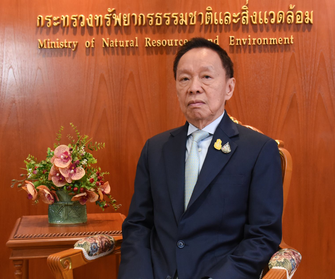Pol. Gen. Patcharawat Wongsuwan
Deputy Prime Minister and Minister of Natural Resources and Environment, the Kingdom of Thailand

Under the theme of “Connecting People and Planet: Exploring Digital Innovation in Wildlife Conservation,” we are commemorating the beauty and wonder of nature on this remarkable planet, utilizing state-of-the-art technological innovations to safeguard our wildlife. The establishment of the CITES agreement on March 3, 1973, marked a significant milestone, fostering a connection between humans, wildlife, plant life, and various technologies, a connection that endures to this day.
In the midst of this rapidly evolving digital era, where technological advancements unfold swiftly, we have witnessed the discovery and exploration of new technologies and innovations. These developments allow us to explore and study the diversity of wildlife and plant life, as well as various natural resources, enabling rapid problem-solving, preservation, and protection of these resources. However, our efforts still fall short of meeting the demands placed on these resources. Hence, the imperative for collaborative research into new technologies and innovations that will enable us to use these resources efficiently, ensuring their optimal utilization for the benefit of future generations.
Thailand has consistently endeavored to study, innovate, and integrate various technologies and innovations to aid in the conservation of wildlife, plants, and other natural resources. This includes the utilization of radio telemetry for animal tracking, deploying camera traps for wildlife photography, developing high-quality surveillance systems, employing N-CAP systems, incorporating drones and unmanned aerial vehicles, as well as utilizing various long-range survey technologies. Laboratory-based technologies and innovations, such as radiation-based DNA analysis and other physical examinations, have been employed. Additionally, the application of the new BCG Economy economic models has played a significant role in our conservation endeavors.
These adaptable technologies further our research, prevention, and control efforts in conservation areas and internationally. Our work addresses conflict resolution between humans and wildlife, haze pollution, and carbon management. Ongoing research aims to mitigate and prevent these challenges. Confident in our ability to address future issues, we recognize the perpetual nature of conservation efforts, emphasizing continuous integration of technology and innovation. This ensures efficient workforce functioning and fosters collaboration, creating sustainable solutions for humanity and our global environment.
Let us embark on this journey of sustainable conservation together, and may this conservation odyssey be characterized by unwavering dedication, wisdom, and collaborative synergy.